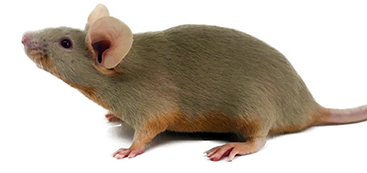
Resources
Diet
Our mice are fed a diet consisting mostly of lab block. We mostly use Harlan Teklad 8604 which is 24% protein. We may substitute with another block if Harlan is not readily available. We try to use a lab block that is a minimum of 18% protein. Anything less is not ideal for pregnant/nursing does or growing young. We also include a mix of seeds, oats, and high quality dog or cat food. Fresh vegetables and fruits are offered on occasion. Treats may be offered from time to time. Clean fresh water is available in a water bottle at all times. Food is provided in a hopper feeder.
Housing
Our mice are housed in size appropriate cages. We use a mixture of converted bins, lab cages, and tanks. Our single bucks are kept in small lab cages. Does are housed in community sized bins that house up to 6 mice comfortably. Mice are provided housed on Aspen Sani-Chips substrate and provided fresh hay every few days. They are also given various wooden and rope chews and cardboard houses and tubes.
Care
All mice are checked and given fresh food and water daily. Our cages are cleaned weekly or as needed, if they get dirty faster. Resident mice are treated monthly with Revolution to prevent parasites such as mites, lice, or worms. We add a pro-biotic to the diet every 2 weeks. In the event of illness, mice are quarantined and treated, as needed.
Breeding
We keep back only the best mice for breeding. Bucks and does are carefully paired to produce the best possible results for the intended breeding. Bucks are paired with multiple does during breeding. Our does are bred a maximum for 3 litters before being retired from breeding. We usually keep breeding animals in a colony set-up for breeding, as does may miscarry if a buck is removed while she is pregnant. Offspring are left with the doe for 4 weeks before being weaned.
Culling
Culling is the process of removing an animal from the breeding population. We cull in various ways. Our litters are culled at a young age to help improve the mother's overall health and to produce larger, healthier offspring. Young bucks often drink more milk than does and will beat out does in rearing, resulting in does falling behind in develop and possibly dying. We will cull buck heavy litters down to give the does a better chance at survival. If we keep any bucks back in a litter for breeding, we usually only keep 1-2 back to grow out. The lesser buck of the two or an older brood buck will be replaced with one we keep back. It is for this reason, that we normally have bucks available for placement when we may not have any does. Culling also refers to weaned babies that did not make the cut and older animals we no longer need for breeding. We cull these animals by offering them for sale to the general public.
Follow our page on Facebook for recent litter pictures and updates:
Breeding Fancy Mice Since 2001

Copyright 2017 | Allison Williams | allisonhmn@gmail.com